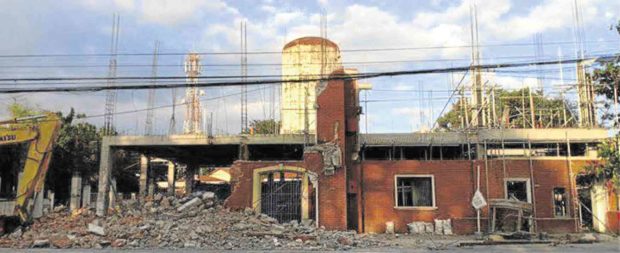
Ten years after the enactment of Republic Act No. 10066 or the National Cultural Heritage Act of 2009, demolitions of the country’s cultural patrimony continue.
The most recent demolition is of the Santa Barbara Presidencia in Pangasinan.
A presidencia is the American-era version of the Casa Real, the seat of the local government which evolved to what is now the municipal or city hall building.
The structure, built during the American period, is a presumed important cultural property since it is at least 50 years old.
Heritage advocates lamented the demolition, describing it as heartbreaking and an obvious violation of the heritage law.
Santa Barbara native Sal Calaguio said the structure should have been saved since the “values and meaning of our cultural past are paramount.” He added that the conservation of cultural heritage is “ethical stewardship.”
Mauro Nepomuceno of the Santa Barbara de Tolong Culture and Heritage Society said the local government had initially planned to renovate the building and put up a museum and library on the second floor.
Nepomuceno expressed shock and dismay at the demolition.
He said “a town can never claim any progress if the authorities and the people cannot take care of its waste and cultural heritage.”
In an interview with the Inquirer, Santa Barbara mayor Carlito Zaplan said the demolition had been approved by both the Municipal Development Council and Sangguniang Bayan.
He said a new building would be erected which would have “a similar design with the old structure, but bigger.” He added it would house the town’s museum and library.
Zaplan said the bricks would be returned and incorporated to the new building.
When asked why the presidencia was demolished, he said the structure built in 1937 was “not a heritage building and not part of the cultural heritage of the town.”
He said the protests were “politically motivated.”
Zaplan added the building had undergone renovations and additions in the past and what was demolished was just 40 percent of the original American-era building.
The National Historical Commission of the Philippines said it was not consulted about the demolition. —CONTRIBUTED